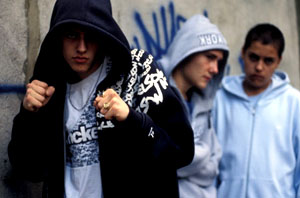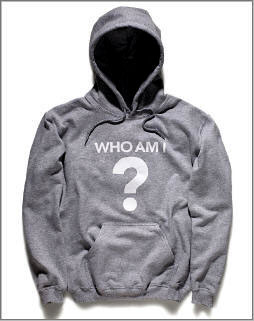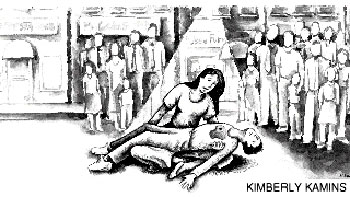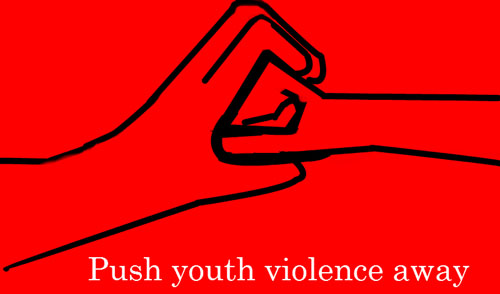Punching Violence in the Face

He was able to deliver four hammering punches to his unsuspecting peer before I could get between them and escort him back to the staff office. We had been discussing his unwillingness to curb his unruly behavior right before he methodically walked out of the office into the community and silently began his assault. I had expected to continue the discussion with newfound intensity when we returned. However, he looked at me with vacant, dead eyes and calmly asked “Can I get my 9 to 12 now?”
That incident was many years ago, but it sticks with me as a lesson in functional, problem solving violence. The “9 to 12” he asked for was 9 to 12 months in a state level secure detention center, something that his judge and probation officer had been threatening. This young man had made a conscious plan to not only to achieve the end of leaving the facility, but to assault a peer who he had long been jealous of, to get there. To his thinking, this was not only acceptable, but justifiable and in some circles that run counter to mainstream society, it was even honorable.
My young patient was far from alone in his worldview. According to a study in Minerva Pediatrics titled “Exposure to violence and victimization and the use of violence by adolescents in the United States,” violence and “firearm injuries are the second leading cause of death among Americans age 15 to 24 and the third leading cause of death among 10- to 14-year-old children.”
 We look at that figure and many of us our shocked. The kids who are most impacted by such statistics are not shocked. They aren’t quite apathetic either. To them those statistics are similar to ones on the common cold. Violent death is an unfortunate part of every day life. Memorial block parties and commemorative T-shirts have become woven into the framework of urban culture as a means of accepting losses that happen all too often. “Although there are many factors associated with the use of violence by youths,” the study continues, “exposure to violence and victimization has consistently been a predictor of the use of violence, as well as intentions to use violence [and] attitudes accepting of the use of violence and aggressive behavior to resolve conflict.”
We look at that figure and many of us our shocked. The kids who are most impacted by such statistics are not shocked. They aren’t quite apathetic either. To them those statistics are similar to ones on the common cold. Violent death is an unfortunate part of every day life. Memorial block parties and commemorative T-shirts have become woven into the framework of urban culture as a means of accepting losses that happen all too often. “Although there are many factors associated with the use of violence by youths,” the study continues, “exposure to violence and victimization has consistently been a predictor of the use of violence, as well as intentions to use violence [and] attitudes accepting of the use of violence and aggressive behavior to resolve conflict.”
Which brings us back to my young patient; towering over me, though he was still too young to drive, new braces on his teeth and fresh bruises on his knuckles. The judge sent him to our facility to fix that behavior. But one can not successfully fix a behavior without mitigation or adaptation of the thinking behind it. If that thinking is born of a lifetime of acculturation in a society that endorses such practices, how lengthy does that process of thought change become, and how do we change it at its core in the individual without changing their culture?
In simplest terms, I’m currently wrestling with how to modify a residential treatment program to target and alter accepted cultural norms toward violence. I ask this because I’m seeing it more often, and seeing the damage which it wreaks on other patients’ therapeutic progress as well as the chances of success for those who have been so acculturated to violence that it has become part of their core identity.
We Fight, Therefore We Are
 Violent American culture exists and is growing. According to a World Health Organization Report on changing the attitude of cultural violence, many communites—most often urban—believe that “violence is an acceptable way of resolving conflict” and a study in the Journal of the American Academy of Child & Adolescent Psychiatry found that “…exposure to violence…was related to adolescents’ internalizing symptoms and externalizing behavior 2 years later…[and these] high levels of violence exposure for urban youths indicate links to a range of psychiatric symptoms and indicators of poor adjustment.”
Violent American culture exists and is growing. According to a World Health Organization Report on changing the attitude of cultural violence, many communites—most often urban—believe that “violence is an acceptable way of resolving conflict” and a study in the Journal of the American Academy of Child & Adolescent Psychiatry found that “…exposure to violence…was related to adolescents’ internalizing symptoms and externalizing behavior 2 years later…[and these] high levels of violence exposure for urban youths indicate links to a range of psychiatric symptoms and indicators of poor adjustment.”
“Cultural acceptance of violence, either as a normal method of resolving conflict or as a usual part of rearing a child,” the WHO report continues, “is a risk factor for all types of interpersonal violence…social tolerance of violent behavior is likely learned in childhood, through the use of corporal punishment or witnessing violence in the family, in the media or in other settings.” Such stories of accepted violence fill my days. Sometimes they’re told to me with bravado. Sometimes with indignation at their parents. Sometime—when quiet and alone—with tears.
When we think about the “how” of all this, we need to focus on the norms of the culture. We all have norms and I think the scales were removed from my suburban eyes when I realized the norms which I grew up with were quite different than those of most of my patients, who come from an inner city, though we are both Americans. It was so foolish for me to think that “American Culture” united us. I’ve had my eyes opened to the reality that your “culture” is usually made within close proximity to your home. Population density further shrinks the size of your impacting culture. In rural America, your culture may be re-enforced by a small town. In urban America your culture is sometimes only as small as your block or your street.
The WHO report declares that teens learn their street culture because “individuals are discouraged from violating norms by the threat of social disapproval or punishment and feelings of guilt and shame that result from the internalization of norms.” And they’re right. But don’t think of it like that. Think of it like this: Your street is the boss. Those crack heads over on Yancy street be doin’ crazy stuff; we don’t do that here. You see any of those Yancy crack heads on this block, you mess them up, boy.
That is the kind of norm we’re talking about.
 Not only does this norm exist because it is enforced by those within the culture, it is also re-enforced by an inherently adversarial environment. A UK study on youth and crime noted that youths who grow up in “marginalized communities which suffer a high degree of social exclusion” are more apt to internalize criminal behavior because it promotes a clear understanding of who are the good guys and the bad. That makes sense in light of violence because you can’t be in fear of violence from all fronts if you are to survive.
Not only does this norm exist because it is enforced by those within the culture, it is also re-enforced by an inherently adversarial environment. A UK study on youth and crime noted that youths who grow up in “marginalized communities which suffer a high degree of social exclusion” are more apt to internalize criminal behavior because it promotes a clear understanding of who are the good guys and the bad. That makes sense in light of violence because you can’t be in fear of violence from all fronts if you are to survive.
Cultural Transmission/Differential Associations Theory states that “all behavior is learned; therefore deviant behavior is also learned.” We in the mental health field, wrestling with the violent which many of our patients come through our doors endorsing, would call that behavior deviant. In their eyes we would be the deviants. However, we can still see that Cultural Transmission Theory provides the last key to the “how.” It “predicts that the younger the learner is, in an intense relationship with the deviant teacher, and the more contacts with significant others who are deviant, then the greater the likelihood the learner will also be deviant.”
What can learned can be unlearned. I wouldn’t be in this profession if I didn’t believe that. The JAACAP Study concludes that “such findings [about acculturated violence] carry implications for direct clinical work with young people, as well as for program development and public policy” and WHO asserts that “interventions that challenge cultural and social norms supportive of violence can help reduce and prevent violent behavior.” The onus is on we, the mental health provider, to provide the reason, tools and environment where that reduction is possible.
A HAVEN From Violence
It always ends with a model, doesn’t it?
This is a model-in-progress, though. I’d love input and feedback. I’m calling it the HAVEN model for Decreasing Acculturated Violence*, because I’m pompous and I have a thing for acronyms. Each letter impacts an aspect of how violence is acculturated or attempts to mitigate an attitude which fosters the norm. Right now I have a handle on the ideal, I’m still noodling with how it would look on a practical level.
Health – In my experience, teens who have grown up in violent culture have an aversion to the term “Mental Health,” but their lifestyle brings with it all manner of mental, emotional and physical unhealthiness. Often, issues such as loud, rapid or pressured speech, as well as weight abnormalities can have anxiety or trauma as a large part of their cause. Once a kid can see and feel the health benifits of a behavior change they are more apt to endorse it.
Acceptance – The UK Study found that, not only are these norms enforced with an “us against them” mentality but that “in contemporary discourses around criminal justice it is apparent that the voices of marginalized youth are often sidelined and ignored. As program directors, staff and therapist we must realize that we are the “them” to our patients, especially when they are acculturated to divide all whom they come in contact with along these lines. Then we show our patients how we are similar and how we relate (which impacts our attitude on disclosure of self) while also showing them that we will give them a voice and attention that they don’t expect us to offer. I’d even go a step further and say that the treatment community would be indoctrinated as the new “us” and the violent culture the new “them” but that has a potential negative impact for patients who will be discharging back to the violence, so it merits more consideration.
Vision – We share our simple vision of a non-violent treatment community and its benefits in the intake literature, even before they come through our doors. Then we help our patients make it theirs. The WHO report talked about an American “anti-violence intervention called Resolve It, Solve It. It consisted of a community media campaign for youths from small towns, led by high-school students who served as peer models. Students helped develop campaign media such as professionally printed materials and radio and television advertisements with three key themes: respect for individual differences, conflict resolution and prevention of bullying.” The results were mixed but the message was clear.
Education – Employing “the social norms approach to health promotion” which “assumes that people have mistaken perceptions of the attitudes and behavior of others. Prevalence of risky behavior is usually overestimated, while protective behaviors are normally underestimated” we can progressively re-educate our treatment population. “The social norms approach seeks to correct these misperceptions by giving people a more realistic sense of actual behavioral norms, thereby reducing risky behavior.” As norms are socially learned and re-enforced, Group Therapy and psychoeducational lectures which are based around the shared vision are designed to aid this process.
Normalization – Throughout this entire process we normalize their change. We empathize with the extreme effort it takes to see the world differently, tolerating missteps and most of all demonstrating why it is best that they may act like knuckle heads on Yancy street, but here in therapy we’re about better things.
We don’t do that here. If more kids return to their violent communities having internalized the power of that vision and seeking it for themselves, their friends and their families, the day will come when the norm shifts toward healing.
________________________________________
*The HAVEN model for Decreasing Acculturated Violence is copyright material, just like all articles on the site. I welcome feedback and will credit all insight which helps shape the model, but if you seek to use it, please email me for permission first. Just click the “Contact and Subscribe” button.


